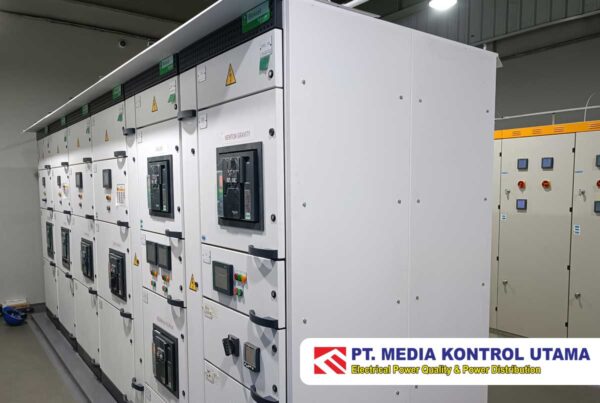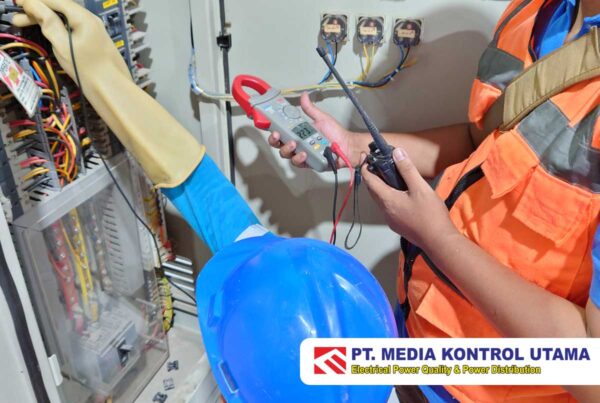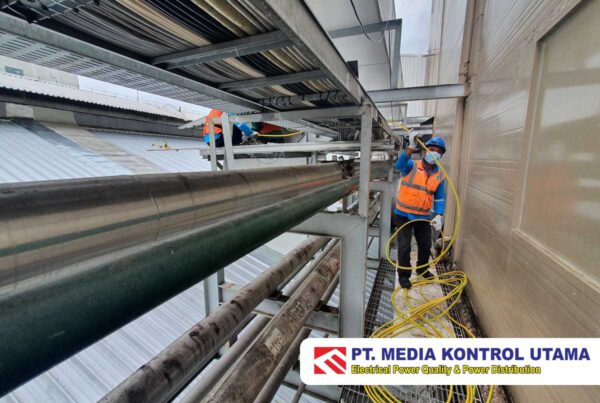Predictive Maintenance for Power Distribution – In today’s rapidly evolving energy landscape, the reliability and efficiency of power distribution networks are more critical than ever. As the demand for uninterrupted power supply continues to rise, so too does the need for innovative solutions that can ensure the smooth operation of these complex systems.
Traditional maintenance strategies, often based on scheduled inspections or reactive repairs, are no longer sufficient to meet the challenges posed by modern power grids. Enter predictive maintenance—a forward-thinking approach that leverages the power of Artificial Intelligence (AI) and the Internet of Things (IoT) to revolutionize how we monitor and maintain power distribution networks.
Predictive maintenance is transforming the way utility companies manage their assets, moving from a reactive model to a proactive one. By continuously monitoring equipment performance in real-time, AI and IoT technologies can predict potential failures before they occur, reducing downtime, lowering maintenance costs, and extending the lifespan of critical infrastructure.
This article explores how AI and IoT are being integrated into power distribution systems, the benefits they offer, and the challenges that come with adopting these cutting-edge technologies.
As we delve into the specifics of predictive maintenance, we’ll examine the key components that make this approach so effective, the role of data analytics in predicting failures, and how these advancements are shaping the future of power distribution.
Whether you’re an industry professional looking to enhance your knowledge or simply curious about the latest technological trends in energy management, this article will provide valuable insights into the next generation of power system maintenance.
The Evolution of Maintenance Strategies in Power Distribution
Traditionally, power distribution networks have relied on two primary maintenance strategies: preventive maintenance and reactive maintenance.
Preventive maintenance involves scheduled inspections and servicing, based on manufacturer recommendations or historical data, to prevent equipment failures.
While this method can reduce the likelihood of unexpected breakdowns, it often leads to unnecessary maintenance tasks and doesn’t always catch potential issues before they become critical.
Reactive maintenance, on the other hand, is performed after a failure has occurred. While this approach minimizes upfront costs, it can result in significant downtime, higher repair costs, and even safety hazards. As power distribution networks become more complex and the demand for reliability increases, these traditional methods are proving to be less effective.
This is where predictive maintenance comes into play. By leveraging real-time data and advanced analytics, predictive maintenance offers a more efficient and cost-effective way to manage power distribution assets.
How AI and IoT Are Revolutionizing Predictive Maintenance
Artificial Intelligence (AI) and the Internet of Things (IoT) are at the heart of modern predictive maintenance strategies. Together, these technologies enable the continuous monitoring of equipment and systems, allowing for early detection of potential issues and informed decision-making.
1. The Role of IoT in Data Collection
IoT devices, such as sensors and smart meters, are deployed throughout the power distribution network to collect vast amounts of data on various parameters, including voltage levels, temperature, vibration, and load conditions. These devices are interconnected, creating a network of smart devices that communicate with each other and central management systems.
The data collected by IoT devices is transmitted in real-time to a central platform, where it can be analyzed to identify patterns and trends that may indicate an impending failure. For example, an abnormal increase in temperature or vibration in a transformer might signal that it is nearing the end of its life cycle.
2. AI-Powered Data Analysis
Once the data is collected, AI algorithms are used to process and analyze it. Machine learning models can be trained to recognize the normal operating conditions of various components within the power distribution network. By comparing real-time data with these baseline models, AI can detect anomalies that might indicate a problem.
AI not only identifies potential issues but can also predict the remaining useful life of equipment, assess the likelihood of failure, and even recommend maintenance actions. This proactive approach allows utility companies to schedule maintenance activities at the most opportune times, reducing downtime and avoiding costly repairs.
Benefits of Predictive Maintenance in Power Distribution Networks
The integration of AI and IoT into power distribution networks offers several key benefits:
1. Reduced Downtime and Improved Reliability
By predicting failures before they occur, predictive maintenance minimizes unexpected outages, ensuring a more reliable power supply. This is particularly important in industries where even a brief power interruption can lead to significant financial losses.
2. Cost Savings
Predictive maintenance helps reduce overall maintenance costs by avoiding unnecessary preventive tasks and minimizing the need for emergency repairs. By targeting maintenance efforts only where they are truly needed, utility companies can optimize their resource allocation.
3. Extended Equipment Lifespan
Regularly monitoring equipment health allows for timely interventions that can extend the lifespan of critical assets. For example, replacing worn-out components before they cause major damage can prevent the need for costly replacements.
4. Enhanced Safety
By identifying and addressing potential issues before they lead to equipment failure, predictive maintenance contributes to a safer working environment for maintenance personnel and reduces the risk of accidents.
Challenges & Considerations
As the sun sets on the era of traditional maintenance strategies, power distribution networks face a new dawn filled with promise and potential, but also challenges that demand innovation. In the old world, utilities relied on preventive measures, scheduling maintenance like clockwork, hoping to stave off failures before they happened.
It was a method born out of necessity, a way to keep the lights on and the wheels of industry turning. But it was also a blunt instrument—imperfect, often leading to unnecessary interventions or, worse, catastrophic failures that caught everyone off guard.
The story of predictive maintenance begins with the emergence of new technologies that promise to change the game forever. Enter the dynamic duo: Artificial Intelligence (AI) and the Internet of Things (IoT).
Together, they offered a way to see into the future, to predict problems before they happened, and to intervene in just the right way, at just the right time. It was no longer about reacting to failures or sticking to rigid schedules; it was about being proactive, about using data to drive decisions.
IoT devices, like a network of vigilant sentinels, began to populate power grids, gathering data from every corner. These sensors collected information on everything—temperature fluctuations, vibration patterns, voltage levels—creating a living, breathing picture of the grid’s health.
But collecting data was only the beginning. The real magic happened when AI stepped in, taking this raw data and turning it into actionable insights. AI didn’t just see numbers; it saw patterns, it recognized anomalies, and it could tell when something was about to go wrong.
Imagine a transformer humming along, seemingly healthy, but deep inside, its components were beginning to wear down. In the old days, this might have gone unnoticed until it was too late. But with predictive maintenance, the IoT sensors would pick up subtle changes in vibration and temperature, feeding this data to the AI.
The AI, with its deep learning capabilities, would compare this to countless other data points, recognizing the telltale signs of impending failure. And just like that, the utility company could step in, replacing the part before the transformer ever missed a beat.
The benefits of this new approach were clear—reduced downtime, lower maintenance costs, and equipment that lasted longer. But the path to adopting predictive maintenance was not without its challenges.
The sheer volume of data generated by IoT devices could be overwhelming. Utilities found themselves grappling with the need for robust data management systems that could not only store but also analyze and make sense of this flood of information.
Integration posed another hurdle. The infrastructure of power distribution networks had evolved over decades, a patchwork of old and new technologies. Integrating advanced predictive maintenance systems into this existing framework required careful planning, significant investment, and sometimes, a leap of faith. And then there was the ever-present specter of cybersecurity. As more devices connected to the network, the potential entry points for cyberattacks multiplied, forcing utilities to prioritize security like never before.
The Consideration of AI and IoT
But perhaps the most significant challenge was the human element. AI and IoT brought with them a need for new skills, new ways of thinking. Utility companies had to invest in training their teams or bringing in new talent to harness the full potential of these technologies.
Yet, despite these challenges, the story of predictive maintenance is one of progress, of a future where power grids are not just maintained but optimized, where failures are not just responded to but anticipated and prevented. Utility companies around the world are beginning to see the benefits.
In one case, a company managed to reduce transformer failures by 30% through predictive maintenance, while another optimized its maintenance schedules, cutting costs by 20% and increasing reliability.
As AI and IoT continue to evolve, the capabilities of predictive maintenance will only grow. The future might even see the rise of digital twins—virtual replicas of physical assets—allowing utilities to simulate scenarios and test solutions without any real-world risk.
Predictive maintenance, powered by AI and IoT, represents more than just a new way to manage power distribution networks; it represents a shift in mindset from reactive to proactive, from managing problems to preventing them.
It’s a leap forward into a future where power supply is more reliable, more efficient, and more resilient. And as the energy landscape continues to evolve, those who embrace this change will find themselves not just surviving but thriving in the new world of power distribution.
Conclusion
Predictive maintenance, powered by AI and IoT, represents a significant leap forward in the management of power distribution networks. By shifting from a reactive to a proactive approach, utility companies can improve reliability, reduce costs, and extend the lifespan of critical infrastructure.
However, the successful implementation of these technologies requires careful planning, investment, and a commitment to overcoming the challenges associated with data management, integration, cybersecurity, and skill gaps.
As the energy landscape continues to evolve, embracing predictive maintenance will be key to ensuring a stable and efficient power supply for the future. Whether you’re a utility company looking to optimize your operations or a professional interested in the latest trends in power distribution, understanding and leveraging predictive maintenance is essential for staying ahead in this dynamic field.
Contact Us
For expert consultation and repair services for your predictive maintenance, reach out to PT Media Kontrol Utama. Our experienced professionals are ready to help you maintain the reliability and safety of your electrical distribution system.
Reference :
- Elsevier, “Machine learning and IoT – Based predictive maintenance approach for industrial applications”,
https://www.sciencedirect.com/science/article/pii/S1110016823011572, accessed 21 August 2024. - ABB Motors and Generators, “What is predictive maintenance on electric motors – low power motors”,
https://youtu.be/cFlY6L1igKY, accessed 21 August 2024. - Iotone, “Distribution Board”,
https://www.iotone.com/case-study/predictive-maintenance-in-schneider-electric/c1241, accessed 21 August 2024. - ABB, “A new AI-based suite for data-driven asset performance management”,
https://new.abb.com/process-automation/genix/genix-apm, accessed 21 August 2024. - Techtarget, “IoT-based predictive maintenance staves off machine failures”,
https://www.techtarget.com/iotagenda/feature/IoT-based-predictive-maintenance-staves-off-machine-failures, accessed 21 August 2024.




